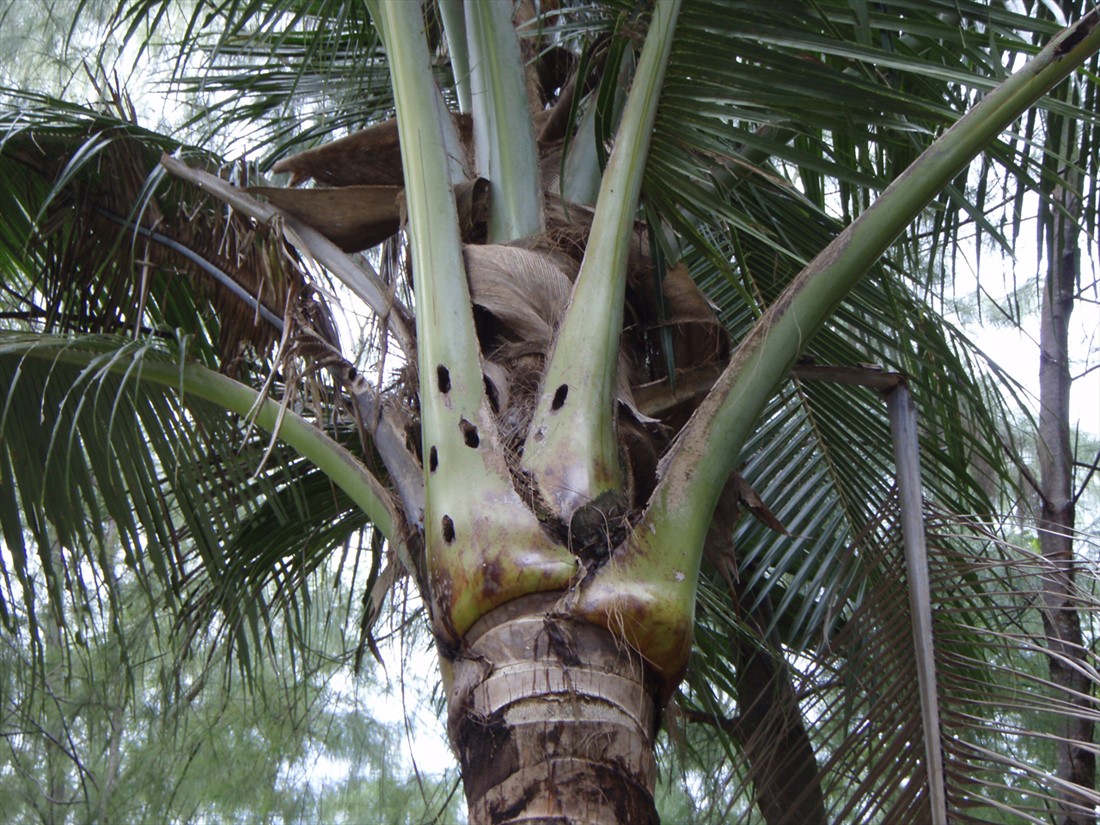

Fronds cut in a V-shape pattern are another indication of CRB presence. They are primarily found in decomposing green waste or in the crown of palms, where they leave oval-shaped boreholes midrib of fronds or in the crown or trunk of the tree.

Adults are long (up to two inches), shiny black in color, with a single horn. Photos (in order): Bugh, Lotz, Ellis, Harrison, Alpsdake, Cranshaw, and Noble.Ĭurrently only found on Oahu, the coconut rhinoceros beetle (CRB). Some of the pests not known to be in Hawaiʻi that will be covered in the training are featured (from top left to right) milk snail, citrus greening effects on fruit, brown marmorated stink bug, lethal palm yellowing, northern giant hornet, black velvet leatherleaf slug, and red imported fire ant. The training will feature information about the identification, reporting, and best management practices for some high-risk pests that are either not known to occur in Hawaiʻi, not known to occur in the United States, or pests that are present but are a high priority for containment. If you think you’ve seen these pests, report immediately to : The Pest Prevention Training Program is a new training for nurseries across the state to detect and protect Hawaiʻi from invasive species. Here are some pests not yet found on Maui to be on the lookout for. The training, offered by the island-based Invasive Species Committees, will feature information about the identification, reporting, and best management practices for some high-risk pests that are either not known to occur in Hawaii, not known to occur in the United States, or pests that are present but are a high priority for containment (like coconut rhinoceros beetle) The Pest Prevention Training Program was created by a grant from the United States Department of Agriculture Animal and Plant Health Inspection Service. Since many new species arrive hitchhiking on nursery materials, nurseries can be front-line heroes in helping to stop new pests before they spread into the environment.Ī new training for nurseries is now available.

Multiple agencies across the state work every day to address invasive species issues and local businesses are pitching in. Some of these new arrivals can become invasive, harming not only our environment and Hawaiʻi’s unique biodiversity but also causing adverse effects on our agriculture industry, health, cultural practices, and quality of life. Today, due to globalization, a new plant, animal, or pathogen that has never been documented in Hawaii arrives every three days. After they arrived to our isolated island chain, they evolved to live in their new environment, becoming new species over hundreds of thousands of years. For millions of years, new arrivals would establish in our islands an average of once every three thousand years via makani (wind), moana (deep ocean currents), or manu (birds or seeds hitchhiking in their gut). Hawaiʻi is home to plant and animal species found nowhere else.


 0 kommentar(er)
0 kommentar(er)
